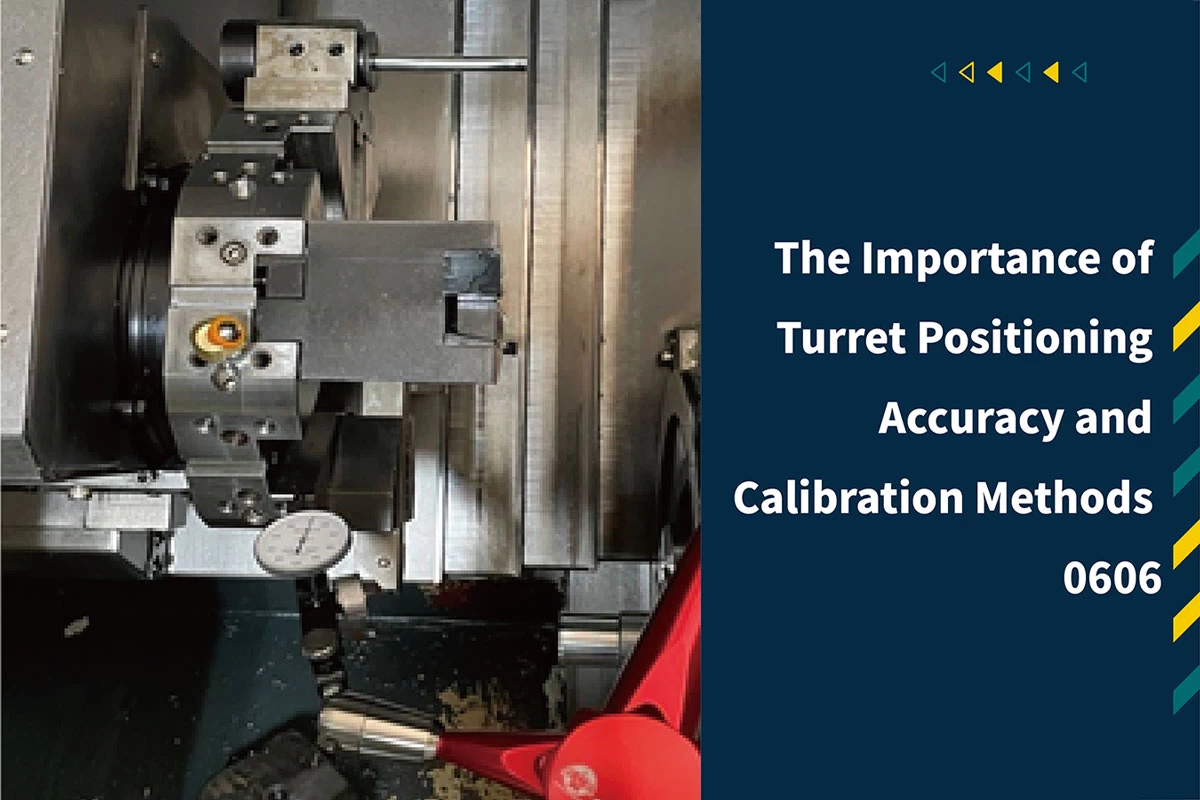The Importance of Turret Positioning Accuracy and Calibration Methods

In CNC machining, turret positioning accuracy plays a critical role.
Any deviation in positioning can negatively impact machining quality and may even result in tool damage or workpieces waste.
This article will help you understand the importance of turret positioning accuracy, common causes of positioning errors, and offer practical calibration suggestions to maintain consistent and efficient production quality.
I. Why is turret positioning accuracy so important?
In CNC lathes or multi-tasking machines, the turret is responsible for switching tools quickly and accurately.
If the turret does not precisely stop at the correct position after indexing, the following issues may occur:
- Increased machining dimensional errors
- Reduced tool life (due to misaligned tool-to-workpiece contact points)
- Automation failures (especially when integrated with robotic arms)
For production lines that require long-term stable operation, these errors can lead to high costs and significant quality risks.
II. Overview of the Turret Tool Change Positioning System
The mainstream turret in the market adopts servo-hydraulic system, along with a positioning mechanism to ensure each tool station is correctly aligned.
The basic operation process is as follows:
- The CNC controller gives a turret indexing command.
- The turret activates the indexing motor to rotate the tool disc.
- Upon reaching the set position, a three-piece coupling locks the turret mechanically.
- Only after confirming the positioning is completed will machining begin.
Even the slightest misalignment in any of these steps can cause turret indexing and positioning errors.
III. Common Causes of Positioning Errors
- Mechanical wear: Long-term use can cause wear in components such as bearings and gears, leading to instability in positioning.
- Insufficient hydraulic pressure or oil leakage: This may reduce clamping force and compromise accuracy.
- Motor encoder or proximity switch failure: Sensors may malfunction after extended use, resulting in mispositioning.
- Misalignment between the spindle and turret center: This is often caused by collisions or tool crashes, affecting precision.
IV. Basic Inspection and Calibration Methods for Positioning Accuracy
Recommended tools:
- Dial indicator
- Magnetic base
- Corresponding CNC interface based on machine model
Inspection steps:
- Use Tool T1 as the reference point.
- Mount the dial indicator on the machine to measure turret position deviations in X, Y, and Z axis after each indexing.
- Repeat indexing 3~5 times and compare the repeatability and absolute positioning error.
Calibration methods:
- If errors are within tolerance, minor adjustments can be made by adjusting the CNC controller’s tool compensation values.
- If errors exceed acceptable limits, disassemble and clean the relevant parts, realign the turret, and replace worn components if needed.
- High-end machines may support automatic diagnostics and built-in calibration functions; refer to the machine manual for guidance.
V. How to Prevent Positioning Errors from Recurring
Maintaining turret accuracy is better than fixing errors after they occur. Here are recommended maintenance and inspection practices:
- Weekly: Clean metal chips and oil residue from the turret surface and coolant ring.
- Monthly: Check for abnormal hydraulic pressure or motor load.
- Every 3~6 months: Perform and log a turret positioning accuracy check.
- Immediately inspect the turret after collisions or significant vibrations.
VI. Conclusion: Positioning Accuracy is the Foundation of Quality Stability
Whether in mass production or precision part manufacturing, consistent turret positioning accuracy directly impacts production outcome and machining efficiency.
By conducting regular inspections and calibrations, you can extend the lifespan of the turret, reduce unexpected downtime, and enhance overall productivity and competitiveness.
If your turret shows signs of instability after extended use, feel free to contact us. We can assist you in all aspects - whether in need of repair, upgrade, or a customized turret solution.
Updated: 2025/09/01